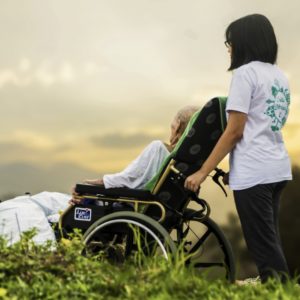Organizations’ perspectives on successful aging with long-term physical disability

CHRT staff Marissa Rurka and Melissa Riba of the Center for Health and Research Transformation (CHRT), recently published a study in the peer-reviewed journal, Disabilities, on Organizations’ perspectives on successful aging with long-term physical disability.
To best serve those aging with physical disabilities, organizations must understand what successful aging means for this population.
From October 2021 to May 2022, 128 organizations serving individuals with long-term physical disabilities were surveyed.
Organizations surveyed described the following domains of successful aging for those living with physical disabilities:
- maximized autonomy and independence;
- living situation;
- health and well-being, and
- social connection and meaningful community engagement.
Autonomy and maximized independence
Some organizations aim to help their clients remain independent, self-reliant, and safe based on their health needs and other factors. Some organizations emphasized that an essential aspect of autonomy was ensuring that individuals had the support needed to live as independently as they desired. Overall, these findings are consistent with the values and priorities described by those aging with physical disabilities.
Living arrangements
Nearly half of the organizations believed one’s living arrangement was highly relevant to successful aging for those with physical disabilities. Many of these organizations described that successful aging means living independently in the community. Others described “aging in place” in one’s own home and society as a signal of successful aging for those with physical disabilities. However, as some organizations pointed out, independent living and remaining in one’s own home may not be feasible, safe, or desired living arrangements for everyone.
Health and well-being
Overall, organizations described health and well-being as maintaining an active, healthy lifestyle and managing symptoms as critical strategies for preventing secondary health conditions and additional loss of function. Some organizations acknowledged that for their clients to maintain a healthy lifestyle and manage their symptoms, it is essential that they have access to resources, including nutritious food, transportation, and competent medical care.
Social connection and meaningful community engagement
Both those aging with disability and the organizations that serve them describe the importance of creating a community culture of inclusion and designing social events and activities that can be adapted so that individuals with varying levels of functional ability can participate. Many organizations believe virtual platforms can be valuable tools for facilitating social connections for individuals aging with disabilities.
Overall, organizations’ priorities for successful aging were consistent with those identified by those aging with physical disabilities.
An organization’s understanding of what it means to age successfully shapes its approach to serving those aging with physical disabilities, including the programs and services offered.
When the services provided by an organization or provider are centered on clients’ concerns and priorities, clients are more likely to engage with and be satisfied with those services, which has positive implications for their health and well-being.